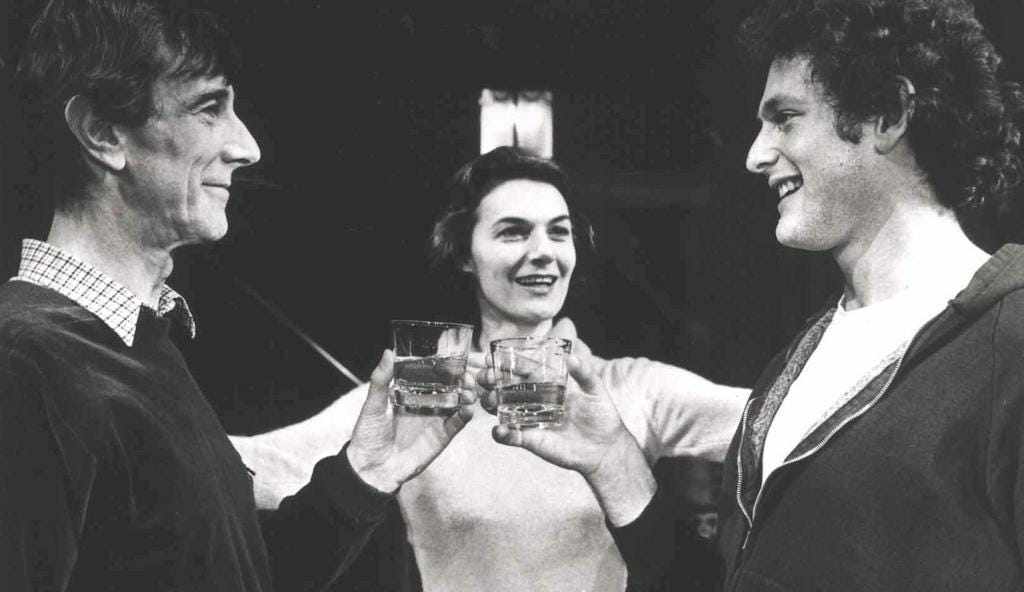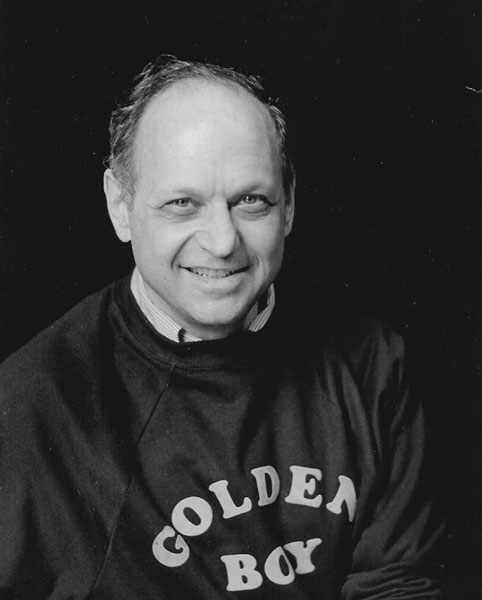
In 1937, boy wonder (or Enfant Terrible) Orson Welles took on William Shakespeare and the theatre world was never the same. It's all here in today's "Theatre Yesterday and Today."
The fabled Mercury Theatre, once led by its young and charismatic leader Orson Welles, is best remembered today for its 1941 film of Citizen Kane. And though the Mercury began as a theatrical troupe on stages across New York City, it was this revolutionary Hollywood black and white film that gave the group its immortality having truly stood the test of time. Even more powerful today, it foreshadowed the story of a wealthy megalomaniac's attempt to vault his way to the Presidency by using every dirty trick in the book (although in Charles Foster Kane's case, it only takes one extra marital affair to bring him to his knees). The film was wildly controversial as the Mercury was all about shaking things up, never more so than its Broadway production in 1937 of Shakespeare’s Julius Caesar. As director and producer, it was Welles's brainchild to perform a modern-dress version emphasizing the fascist elements that were being put into practice on a daily basis then in Germany and Italy. With its conspirators dressed in suits and ties, the game of back stabbing (and front stabbing) was a first for audiences caught up at the time in an international game of intrigue that portended an encroaching menace on our own soil. Sound familiar?

Founded by Welles and the legendary John Houseman, the Mercury took its roots in the theatre, expanded to radio, then found a short period of acclaim and notoriety (if not financial success) with the films of Citizen Kane and The Magnificent Ambersons. Before disbanding, this astounding group of artists from all backgrounds and disciplines, shook the theatrical establishment with boldly original productions. Branching out, they made history on the radio with their provocative and groundbreaking War of the Worlds, turning H.G. Wells’s book into a night of terror for unsuspecting listeners who thought what they were hearing was a real news report of an alien invasion in the fictional town of Grover’s Mill, New Jersey. Broadcast October 30, 1938 on the night before Halloween, it caused near rioting in some communities and foreshadowed the sort of power a live, on-air manipulation could wreak. This notion of realism informed all the work of the Mercury, even before it garnered its official title, with the very first Welles-Houseman collaboration for the Federal Theatre Project, the 1936 voodo-Macbeth. Set in the West Indies, with an all-African American cast of 150, it sent an immediate message this was not your father’s Shakespeare. Welles, its director, was twenty years old. The “genius” from Kenosha, Wisconsin was on his way.
In the intense world atmosphere of 1937, in direct response to the uprising of fascism in Europe, Welles and Houseman went to work on Julius Caesar, in what would be the first stage production of the Mercury Theatre. Mirroring what was going on in fascist Italy, it was set in contemporary Rome just under the new regime of Mussolini. The production ignited a flame of passion in its audiences to the degree that Norman Lloyd, perhaps its last surviving cast member (and still going strong at age 105), is quoted as having said “to this day, it remains the most exciting Shakespeare production I have ever seen.” Since then, so many classics have been done in modern ways that it may be difficult to imagine what impact such a take may have had in its day. For greater detail, here is what one of Welles’s biographers, Charles Higham, wrote about its costumes and scenic and lighting design:
“Caesar wore a Sam Browne belt and a dark green uniform, exactly like Mussolini; the conspirators bent on the assassination of Caesar wore fedora hats turned down at the brim and turned-up coat collars, like gangsters in Hollywood “B” movies; and Brutus wore an ordinary civilian suit, not unlike that which a politician might sport during a campaign… At the time we used to see newsreels of the Nuremberg rallies, with the great stream of light going from the ground to the heavens—very effective theatrically. And Orson thought Julius Caesar might be adapted to parallel that, to Hitler… he put these beams in the floor, and at the appropriate moment they lit the stage. It was just dazzling.”

The lighting designer was Jean Rosenthal, the woman who would change the face of her profession. Describing her achievement in an online interview from 2014, Norman Lloyd stated: “Orson had the brick walls of the theater all painted blood red, and the set was open wall-to-wall in the theater. On the stage itself was a series of risers, and one had squares cut in it and lights put in the squares that shot straight up. They were known as the Nuremberg lights because they were an imitation of the lights Hitler used at the Nuremberg Conference, a famous 1934 visual conference done by Leni Riefenstahl.”

For anyone curious enough, Welles’s Mercury Theatre on the Air, debuted on radio in 1938 with a one-hour version of this Julius Caesar. Here is a link to listen to it.
Due to major personality clashes, the team of Welles and Houseman could not endure, despite bringing out the best in each other. Houseman went on to a long and varied list of successes in many areas of the business: producer, director, author, educator (he founded the Julliard School of Drama), as well as his late bloom as an actor, winning a Best Supporting Actor Oscar at age seventy-three for the film The Paper Chase. Such was not the case for Welles. Although many of his setbacks were entirely of his own doing, his self-destructive nature was a definite deterrent.

The Mercury Theatre, which has gone down as one of the most exciting upstarts in the history of the American theatre, lasted but two seasons. It was a tremendous loss as it can not be argued that it was here, collaborating with such giants as Houseman and Rosenthal, as well as Marc Blitzstein (composer) and Samuel Leve (scenic design), where Welles did his best work. After the Mercury disbanded, Welles's subsequent theatre productions rarely yielded successes. But at least for one brief shining moment, a production like Julius Caesar had an impact that reverberated over time to make possible all that came after by way of innovative Shakespeare productions the world over.
If you enjoy these columns, check out Up in the Cheap Seats: A Historical Memoir of Broadway, available at Amazon.com in hardcover, softcover and e-book. Also sign up to follow me here, and feel free to email me with comments or questions at Ron@ronfassler.org.






















Write a comment ...